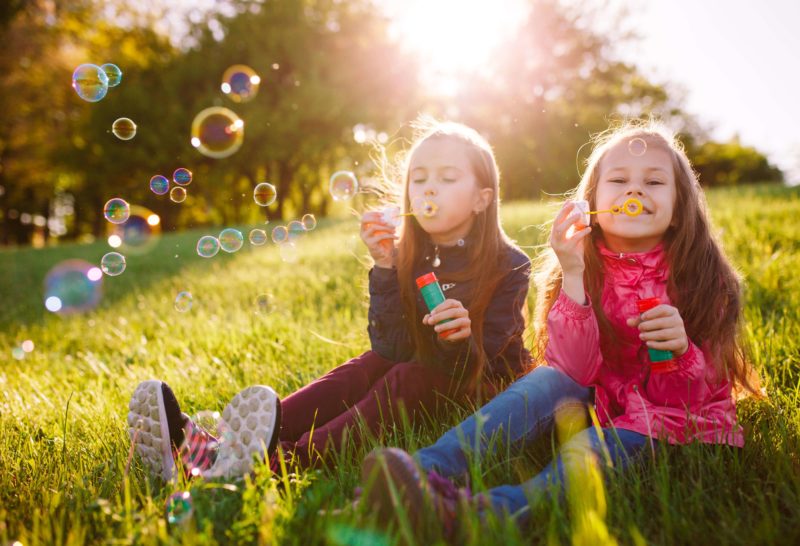‘Just breathe’ – why are we told to do it so often? What are the benefits?
We are often told to focus on and slow our breathing to facilitate relaxation, a sense of calm and focus on the present. Often promoted as a strategy for self-regulation during moments of heightened emotion such as anger or frustration, focusing on breathing can centre the body and encourage the calm-alert, ready-to-go state needed to learn, play and function. This blog delves into the evidence-based reasoning behind this common strategy and deconstructs some of the human biological facts necessary to understand it.
The Vagus Nerve and Polyvagal Theory
The vagus nerve connects the brain to the throat, to the heart, down to the gastro-intestinal system and essentially runs to every major organ in the body. Because there are numerous branches of the vagus nerve this led to the term ‘polyvagal’. . This nerve controls muscles in the throat necessary for speaking and swallowing, carries sensory information to regulate our heart rate and blood pressure and receives sensory information from our mouth, throat, ears, chest, neck, and abdomen. These functions all play a role in response to stressful situations, emotional regulation, attachment and self-expression during the social engagement.
How is this relevant for my child in everyday life?
Situations such as a friend getting into our personal bubble abruptly and without warning, a sibling stealing or not sharing a toy, or when the group plan does not go how we expected, can result in feeling overwhelmed and stressed. During this time our heart rate may increase and lead to an increase in short shallow breaths- this is all controlled by the polyvagal mechanism we mentioned earlier!
How and why should we address this?
An anxious state when we are breathing quickly from our chest is not ideal to engage in productive problem-solving, negotiation or emotional expression through social communication. Hence, it is crucial to equip children with the ability to recognise this as an opportunity to self-regulate before continuing to engage in learning or play productively.
If we take deep breaths from the belly, this can slow our heart rate down via the polyvagal connection and result in more relaxed facial expressions and a calmer body.
Activities your child can do to practice regulation and benefit from deep breathing:
- Blow bubbles through a straw into a bowl of water with soap
- ‘Balloon Breaths’ – pretend your belly is a balloon, take a deep breath in through your nose and feel the balloon inflate, hold it in, then slowly release the air
- ‘Crab Walk Breaths’ – sit on the floor, lean back onto your arms and lift your body into a crab walk position, take a deep breath in, breath out and walk like a crab
- Cut up a piece of sponge and using a straw blow air onto the sponge pieces to see how far you can move them.
- Birthday party pretend play – blowing out the candles, cooling the chicken nuggets and meat pies down if they’re too hot by blowing.
- ‘Teddy breathing’ – child/ren to lay down on their back and balance teddy on their chest, watching teddy rise and fall with their chest.
References
Furman, S. A. & Porges, S. (2011). The early development of the autonomic nervous system provides a neural platform for social behaviour: a polyvagal perspective. Infant and Child Development, 20 (1), 106-118
https://doi-org.ezproxy1.acu.edu.au/10.1002/icd.688
Hughes, D. A., & Baylin, J. (2012). Brain-based parenting: The neuroscience of caregiving for healthy attachment. New York, NY, US: W W Norton & Co.
Lauren, P. (2020) Book Review of Beyond Behaviors: Using Brain Science and Compassion to Understand and Solve Children’s Behavioral Challenges. School Community Journal., 30 (1) http://www.schoolcommunitynetwork.org/SCJ.aspx
Porges, Stephen W. 2011. The Polyvagal Theory – Neuro-physiological foundations of Emotions, Attachment, Communication, Self-Regulation
Porges, S. W (2001). The polyvagal theory: Phylogenetic substrates of a social nervous system. International Journal of Psychophysiology, 42(2), 123-146. https://doi.org/10.1016/s01678760(01)00162-3
Schore, Allan. 2000. Attachment and the regulation of the right brain*. Attachment & Human Development Vol 2 No 1 April 2000 23–47


